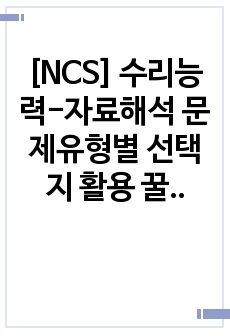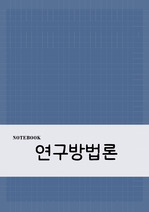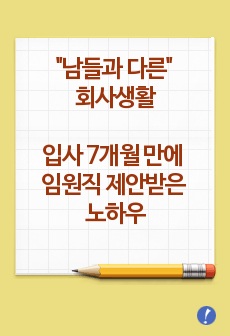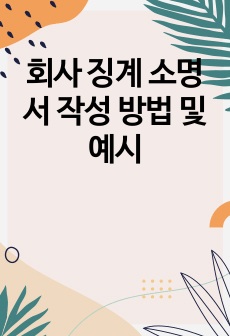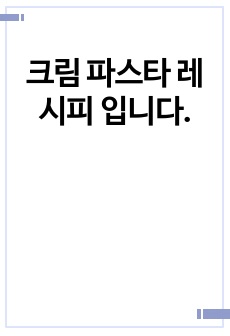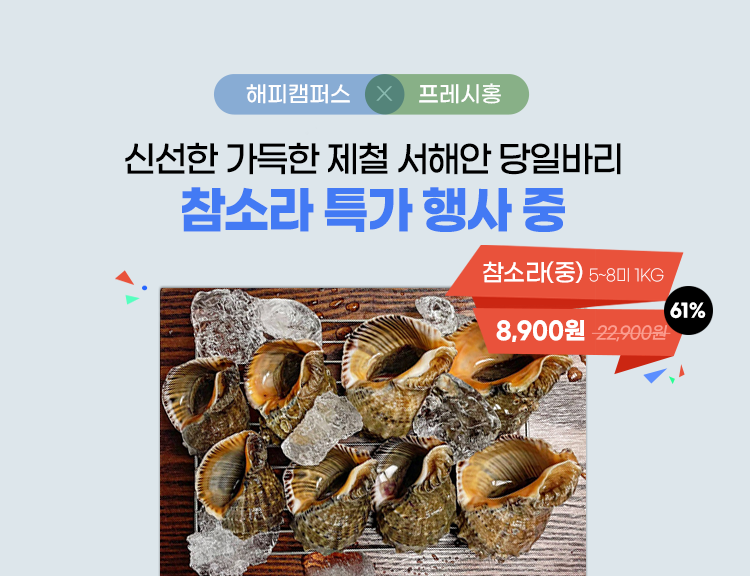* 본 문서는 배포용으로 복사 및 편집이 불가합니다.
서지정보
ㆍ발행기관 : 한국한자한문교육학회
ㆍ수록지정보 : 漢字漢文敎育 / 26권
ㆍ저자명 : 尹在敏
ㆍ저자명 : 尹在敏
목차
Ⅰ. 緖言Ⅱ. 韓國의 漢文科 敎育課程의 主要 變遷 樣相
1) 解放 以後~第1次 敎育課程 以前
2) 第1~2次 敎育課程
3) 第3~5次 敎育課程
4) 第6~7次 敎育課程
5) 2007년 및 2009년 改定 敎育課程
Ⅲ. 韓國의 漢文科 敎育課程의 體制
1) 第1次 敎育課程의 體制
2) 第2次 敎育課程의 體制
Ⅳ. 結言
한국어 초록
韓國에서 漢文이 獨立敎科로 敎授되기 始作한 것은 1972年2學期以後中․ 高等學校에서이다. 그 以前에는, 初․中․高等學校共히 漢文이 國語敎育의 一部로서 部分的으로 敎授되거나 아예 敎授되지 못하기도 하였다. 1945年解放以後韓國의 公式的인 制度敎育內敎育課程의 制定은 美軍政廳에 依해서 이루어졌다. 漢字敎育과 關聯하여 美軍政廳이 最初로 시행한 조처는, 軍政廳學務局의 ‘暫定的國語敎育의 臨時措處’로부터라고 할 수 있다. 곧 이 조처는 初等學校國語敎科書에서 漢字와 國文의 混用또는 欄外倂記를 部分的으로 許容함으로써 初等學校에서 漢字敎育이 一定하게 施行되도록 하였 다. 한편 美軍政廳編修局이 1947년 9월 1일 제정 시행한 ‘敎授要目’은 中․高等學校에서 國語科의 補充敎材의 形式으로 漢文科目을 選擇할 수 있도록 하 였다. 이후 1951년에 문교부는 戰時학습방침을 수립하면서 漢字敎育과 관련하여 劃期的이라고 할 수 있는 정책을 마련한다. 곧 이 해 9월 漢字․漢文敎育史上 최초로 ‘常用一千字表’를 제정 공포한 것이 그것이다. 이 常用漢字1,000자는 이 후 1957년 11월에 제정한 ‘임시제한한자 1,300자’ 및 1972년 8월에 제정하고 2000 년 12월에 이를 다시 調整公布한 ‘중․고등학교 한문교육용 기초한자 1,800자’ 의 선구가 되는 것이다. 1955年8月1日告示된 第1次敎育課程에서는 初等學校의 境遇에 漢字敎育 에 對한 明示的規定을 별도로 두지 않았지만, 漢字敎育이 如前히 施行되고 있 었다. 中學校의 境遇에는 國語科敎育課程아래에 ‘漢字및 漢字語學習’에 대한 규정을 별도로 두어 漢字․漢文敎育이 독립된 교과서를 갖는 하나의 과목으로 敎授될 근거를 마련해 놓았다. 高等學校의 境遇에는 역시 國語科敎育課程아래 에 ‘漢字및 漢文指導’ 규정을 두어 選擇敎科國語(2)의 한 領域으로 ‘漢文’ 과 목을 設定하였다. 1963年2月15日에 告示된 第2次敎育課程에서는 初等學校의 境遇에 國語科 4學年學年目標에 漢字關聯規定을 명시적으로 두어 한자 교육을 보다 강화하 였다. 중․고등학교의 경우에는 제1차 교육과정에서와 마찬가지로 國語科敎育課程속에 관련 규정을 그대로 두되, 漢字․漢文敎育을 보다 강화하였다. 가령, 고등학교의 경우 ‘國語Ⅰ’에서의 漢字敎育以外에도, 人文系課程의 境遇國語 Ⅱ의 한 科目으로 18單位(文法⑷, 漢文⑹, 古典⑷, 作文⑷) 가운데 漢文6單位, 職業系課程의 境遇漢文6單位를 履修하게 하였다. 그러나 1969年9月4日改定되어 1970年1學期부터 施行된 敎育課程部分改定에서는 初等學校와 中學校의 國語및 高等學校의 國語Ⅰ의 敎育課程에서 漢字및 漢文關聯條項을 削除하여 漢字, 漢文敎育을 아예 廢止하고 말았다. 다만 人文系高等學校國語Ⅱ에 있는 漢文의 境遇에만 單位數를 6單位에서 8單位로 增加시켜 존속시켰을 뿐이다. 中․高等學校에서 漢文敎育이 復活한 것은 1972年2月28日告示되고 이 해 2學期부터 施行된 敎育法施行令에 依해서다. 이 施行令에 依하여 中․高等學校에 漢文敎科가 獨立新設되어, 이 해 2學期부터 漢文이 獨立敎科로서 公式的으로 敎授되기 始作하였다. 中․高等學校各900字씩 ‘漢文敎育用基礎漢字’ 1,800字를 制定하여 公布한 것도 바로 이 무렵인 1972年8月16日의 일이다. 1973年8月31日에 告示된 第3次敎育課程에서부터 第5次敎育課程에 이르 기까지는 中․高等學校에서 漢文이 獨立敎科로서 사실상 必修科目으로 施行 된 時期이다. 곧 中學校漢文은 1, 2, 3學年各其週當1時間씩 必修科目으로 敎授되었다. 高等學校의 境遇에는 漢文Ⅰ은 共通必修또는 必修選擇, 漢文Ⅱ는 人文系必修(但, 3, 4次敎育課程에서는 課程別必修, 5次敎育課程에서는 課程別選擇)로 亦是사실상 必修科目으로 敎授되었다. 1992年6月30日告示되고 1995年부터 施行된 第6次敎育課程以後漢文敎科는 中․高等學校共히 必須科目에서 選擇科目으로 轉落했다. 곧 第6次敎育課程에서는 中學校漢文이 選擇科目으로 되었고, 高等學校漢文Ⅰ, 漢文Ⅱ가 課程別必修科目으로 바뀌었다. 高等學校의 課程別必修科目 이란 市․道敎育廳이 選擇해야 該當敎育廳所屬學生들이 履修하는 選擇科目이다. 結局第6次敎育課程에서는 漢文敎科가 中․高等學校共히 選擇科目 으로 된 셈이다. 한편, 이 第6次敎育課程에서 特記할 事項은 初等學校漢字敎育과 關聯한 條項을 添附하였다는 것이다. 곧 初等學校에 ‘學校裁量時間’을 新設하면서, 이 時間에 活用할 수 있는 敎育活動으로 漢字를 몇몇 다른 科目들과 함께 例示함으로써 制限的이나마 漢字敎育이 可能하도록 하였던 것이다. 1997年12月30日告示되고 2001年부터 施行된 第7次敎育課程에서는 中學校漢文이 敎科裁量活動時間에 學習해야 할 選擇科目으로 되었고, 高等學校漢文이 2, 3學年選擇科目으로서, 一般選擇科目群에 漢文⑹, 深化選擇科目群 에 漢文古典⑹으로 開設되었다. 2007年改定敎育課程에서는 中學校漢文이 敎科裁量活動時間에 學習해 야 할 選擇科目으로 되었고, 高等學校漢文이 2, 3學年選擇科目으로서 普通敎科敎養科目群(漢文, 敎養科目群)에 漢文I⑹, 漢文Ⅱ⑹로 開設되었다. 그러나 2007年改定敎育課程은 얼마 施行해 보기도 전에 2009年改定敎育課程으로 다시 再改定되었는바, 이에 따르면 中學校漢文은 選擇科目群의 하나 로 되었고, 高等學校漢文은 普通敎科의 生活․敎養敎科群에 漢文I⑸, 漢文 Ⅱ⑸로 開設되어 있다. 한편 2009年改定敎育課程에서 特記할 事項은 初等學校漢字敎育과 關聯한 條項을 다시 添附하였다는 것이다. 곧 初等學校에서 漢字敎育을 關聯敎科(群)와 創意的體驗活動時間을 活用하여 指導할 수 있도록 하고, 또 學校級別共通事項으로 提示된 凡敎科學習主題中의 하나에 漢字敎育을 包含시켜서 敎育할 수 있도록 한 것이다.영어 초록
In Korea, Korean Classical Chinese began to be instructed as the independent subject after the second semester, 1972 in middle․high schools. Before that, in elementary․middle․high schools, Korean Classical Chinese was instructed as part of the Korean Language or never instructed. After liberation in 1945, in the formal institutional education of Korea, the establishment of the curriculum was done by U.S. Military Government Office. In relation to Chinese Character education, the first measure by the Office was the temporary one of Korean Language education lead by the Education & Management Bureau. Through such a measure, in the elementary Korean Language textbooks, Chinese Character and the Korean alphabet’s mingling or combined recording in the margin was partially accepted so intended to implement Chinese Character education constantly in the elementary school. In the mean time, through ‘Instruction Program’ enforced by the Textbook Compilation Bureau, U.S. Military Government Office on the 1st, Sep. 1947, in the middle․high schools, it came to be possible to select Korean Classical Chinese subject as the form of the complementary teaching material for Korean Language class. In 1951, the Ministry of Culture & Education established the wartime learning policy and prepared the epoch making policy on Chinese Character education. In other words, on September of the year firstly on the history of Chinese characters & Classical Chinese education, it promulgated ‘The Table of One Thousand Letters in Common Use’. Such one thousand Chinese Characters in common use were the initiative of ‘1, 300 Chinese Characters Tentatively Limited’ enacted on Nov. 1957 and ‘Basic 1,800 Chinese Characters for Middle․High School Education’ enacted on Aug. 1972 and adjusted on Dec. 2000. In the 1st Curriculum notified on the 1st, Aug. 1955. there was no explicit provision on Chinese Character educationin the elementary school but it was still enforced. In case of middle school, through preparing a provision on the ‘Chinese Character & Chinese Word Learning’ under Korean Language curriculum, it made a foundation for Chinese characters & Classical Chinese education to be instructed as the subject having an independent textbook. In case of high school, a provision was a prepared on ‘Chinese characters & Classical Chinese Instruction’ also under Korean Language curriculum so set ‘Korean Classical Chinese’ as the area of the selective subject of Korean Language(2). In the 2nd Curriculum notified on 15th, Feb. 1963, a provision was prepared explicitly on Chinese Character as the aim of the Korean Language class in the 4th grade of the elementary school so Chinese Character education was more intensified. In case of the middle․high schools, like the 1st Curriculum, the related provision was maintained in the Korean Language curriculum but Chinese characters & Classical Chinese education was even more strengthened. For example, in case of high school in addition to Chinese Character education under Korean LanguageⅠ, among 18 units(grammar⑷, Korean Classical Chinese⑹, classics⑷, composition⑷), six units of Korean Classical Chinese was completed as the subject of Korean Language Ⅱ in the general course and six units of Korean Classical Chinese in the vocational course. However, through the partial amendment of the curriculum revised on 4th, Sep. 1969 and enforced from the 1st semester in 1970, in the curriculums of Korean Language for elementary and middle schools and of Korean LanguageⅠ for high school, a provision on Chinese characters & Classical Chinese education was omitted so its education was eventually abolished. Only in case of Korean Language Ⅱ for the general course of high school, the number of units of Korean Classical Chinese increased from 6 to 8 units so it was continued. In the middle․high schools, the recovery of Korean Classical Chinese education was done by the Enforcement Ordinance of the Educational Law notified on 28th, Feb. 1972 and enforced from the 2nd semester of the year. By such an Ordinance, in the middle․high schools, Korean Classical Chinese subject was newly and independently established and it began to be instructed formally as the independent subject from the 2nd semester of the year. Also, on 16th. Aug. 1972, ‘1,800 Basic Chinese Characters for Education’, 900 characters respectively was enacted and notified in the middle․high schools. From the 3rd Curriculum notified on 31th, Aug. 1973 to the 5th, it was periods that Korean Classical Chinese was required as the independent subject. In other words, in the middle school, Korean Classical Chinese was instructed as the required subject for 1hour per week in the 1,2,3 grade each. In case of high school, it was also instructed as the required subject, that is, Korean Classical ChineseⅠ as the required commonly or selective essentially and Korean Classical Chinese Ⅱ as the required(however, as the required by course in the 3rd, 4th Curriculum, as the selective by course in the 5th). After the 6th Curriculum notified on 30th, June, 1992 and enforced from 1995, Korean Classical Chinese subject fell from the required to the selective course in middle․high schools. In the 6th Curriculum, Korean Classical Chinese of middle school changed into the selective subject and Korean Classical ChineseⅠ, Ⅱ of high school into the required by course. In the high school, the required subject by course refers to the selective subject which city․province educational bureaus select and then students under the pertinent bureau may complete. In the end, in the 6th Curriculum, Korean Classical Chinese subject came to be the selective subject in both middle and high schools. Meanwhile, in the 6th Curriculum, what is specially noteworthy is the adding the provision on Chinese Character education in the elementary school. In other words, while newly establishing ‘Discretionary Class’ in the elementary school, Chinese Character was exemplified as the educational activity to be used with several other subjects. So, though limited, Chinese Character education could be possible. In the 7th Curriculum notified on 30th, Dec. 1997 and enforced from 2001, Korean Classical Chinese of middle school became the selective subject to be learned in the discretionary class. And, Korean Classical Chinese of high school, as the selective subject in the 2nd, 3rd grades, was opened into Korean Classical Chinese⑹ in the general selective subject group, and into Chinese Classics⑹ in the further selective subject group. In the revised Curriculum in 2007, Korean Classical Chinese of middle school became the selective subject to be learned in the discretionary class. And Korean Classical Chinese of high school, as the selective subject in the 2nd, 3rd grades, was opened into Korean Classical Chinese I⑹, Korean Classical Chinese Ⅱ⑹ in the common subject, cultural subject group(Korean Classical Chinese, cultural subject group). However, the 2007 revised Curriculum was immediately re-amended into the 2009 revised Curriculum. Under this Curriculum, Korean Classical Chinese of middle school became one of the selective subject groups. And Korean Classical Chinese of high school was opened into Korean Classical Chinese I⑸, Korean Classical Chinese Ⅱ⑸ in the life․culture subject group among the common subjects. In the mean time, in the 2009 revised Curriculum, what is specially noteworthy is adding the provision on Chinese Character education of elementary school again. That is, it made possible to instruct Chinese Character using the related subject(group) and creative experience activity in the elementary school including Chinese Character education into one of pan-subject learning themes presented as the common by class and school.참고 자료
없음태그
"漢字漢文敎育"의 다른 논문
 漢字文化圈의 再形成과 韓國의 漢字․漢文敎育의 現況35페이지
漢字文化圈의 再形成과 韓國의 漢字․漢文敎育의 現況35페이지 愉快有效的漢字部件識字法18페이지
愉快有效的漢字部件識字法18페이지 字本位 “读识读”14페이지
字本位 “读识读”14페이지 漢字文化圈의 變化와 漢字․漢文敎育의 새로운 방향 모색45페이지
漢字文化圈의 變化와 漢字․漢文敎育의 새로운 방향 모색45페이지 應用科技幫助建立漢字的觀念15페이지
應用科技幫助建立漢字的觀念15페이지 外国語教育としての漢字字形の相違に対する認識の必要性17페이지
外国語教育としての漢字字形の相違に対する認識の必要性17페이지 東亞細亞 三國의 大學入試 漢文 試驗 比較 考察62페이지
東亞細亞 三國의 大學入試 漢文 試驗 比較 考察62페이지 漢文科 統合 授業을 위한 敎授․學習 활동29페이지
漢文科 統合 授業을 위한 敎授․學習 활동29페이지 非华人学生学习华人母语教材的汉字教学策略15페이지
非华人学生学习华人母语教材的汉字教学策略15페이지 香港南亞裔學生學習寫字的困難15페이지
香港南亞裔學生學習寫字的困難15페이지










